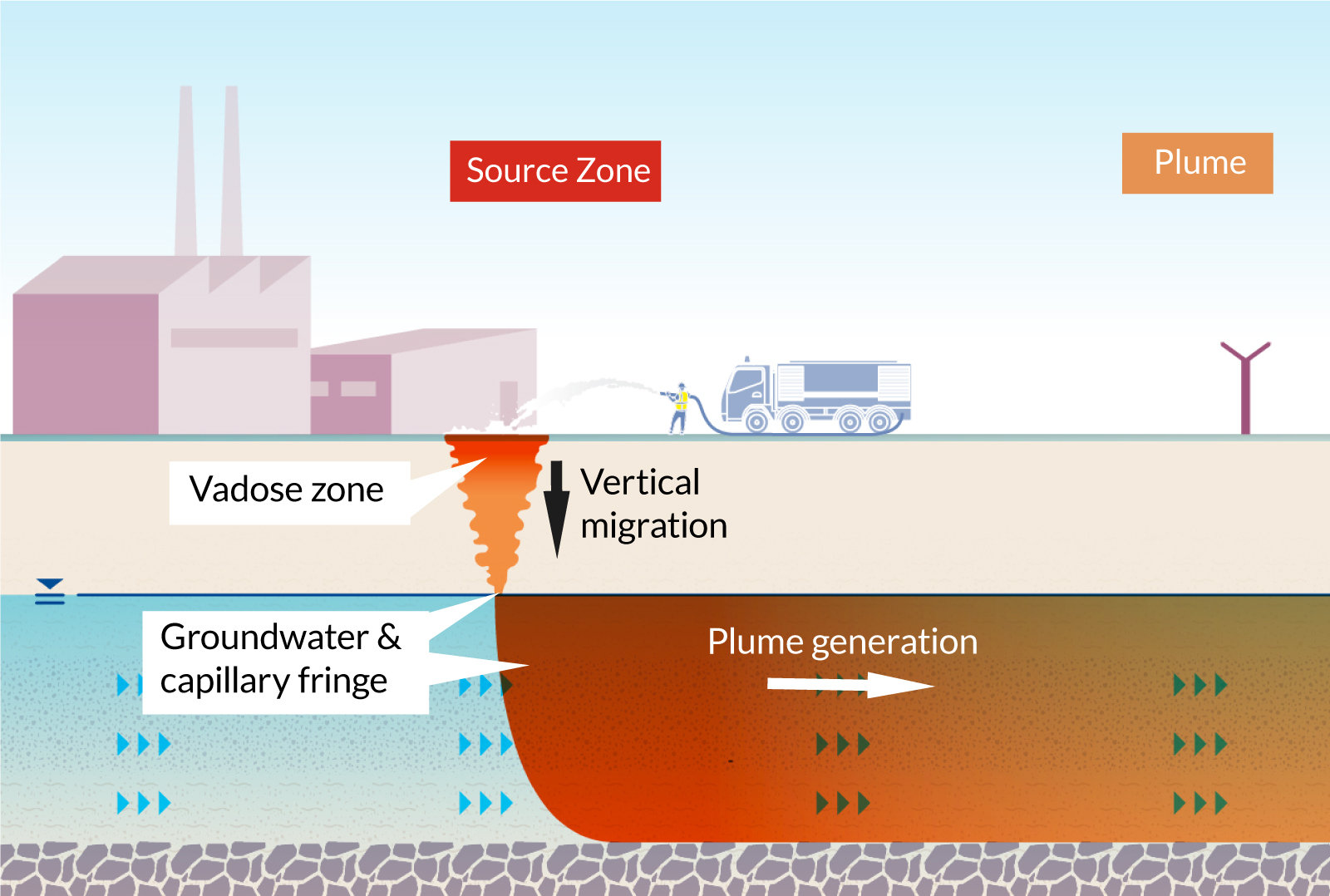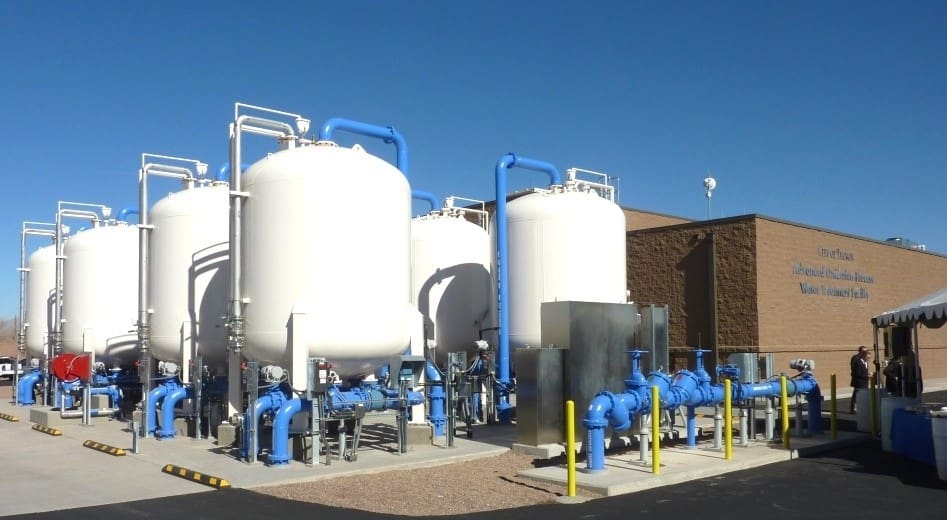M270 Waste Management: An Innovative Solution for Managing Harmful Waste
M270 Waste Management: An Innovative Solution for Managing Harmful Waste
Blog Article
Just How PFAS Treatment Ensures Tidy and Sustainable Water
The presence of PFAS, typically understood as "permanently chemicals," presents considerable difficulties to water high quality and public health and wellness. The effects of these therapies expand past instant health and wellness advantages; they increase important concerns regarding long-lasting water administration techniques that should be addressed to ensure a resilient future.

Understanding PFAS Contamination
PFAS, or per- and polyfluoroalkyl compounds, have actually become a considerable ecological concern due to their extensive frequency and perseverance in the environment. These synthetic chemicals have actually been made use of in numerous industrial applications and consumer products, including non-stick cooking equipment, waterproof garments, and food product packaging, due to their distinct properties such as water and grease resistance.
The contamination of dirt and water resources by PFAS occurs mostly with commercial discharges, firefighting foam usage, and leaching from garbage dumps. pfas management. As soon as launched, these substances are resistant to destruction, leading to their buildup in the setting. This perseverance elevates essential concerns, as PFAS can take a trip lengthy distances through groundwater and surface water supply, influencing alcohol consumption water materials and communities

Wellness Threats of PFAS
The perseverance of PFAS in the environment elevates substantial wellness concerns for individuals exposed to these substances. Referred to as "forever chemicals," PFAS do not break down easily and can accumulate in bodies over time. Research study has linked PFAS exposure to various adverse wellness results, consisting of body immune system disorder, liver damage, and increased threat of particular cancers cells - pfas management. Significantly, research studies have shown elevated cholesterol degrees and possible influences on reproductive and developing health and wellness, especially in expecting individuals and infants.
The ubiquity of PFAS in customer items, such as non-stick cookware, water-repellent textiles, and food product packaging, further magnifies the risk of direct exposure. Drinking water infected with PFAS is a significant problem, as these chemicals can leach right into groundwater sources. Prone populaces, including kids and those living near industrial sites, might face elevated risks because of their developing systems and prospective for greater exposure degrees.
As awareness of these health and wellness risks remains to grow, regulative firms are beginning to develop guidelines for PFAS degrees in drinking water. Public wellness initiatives are vital to alleviate exposure and why not try these out safeguard areas from the long-term impacts of these hazardous compounds.

Ingenious Treatment Technologies
Exactly how can we effectively take on the obstacles positioned by PFAS contamination in water sources? Innovative therapy innovations are emerging as important remedies in the mission for clean water. These methods focus on the elimination or destruction of per- and polyfluoroalkyl materials (PFAS), which are notorious for their perseverance in the environment.
One encouraging method is adsorption using innovative products, such as activated carbon and ion exchange materials. These products have revealed efficiency in capturing PFAS particles from water. An additional noteworthy innovation is membrane layer filtration, which uses nanofiltration and turn around osmosis to separate pollutants at the molecular degree, thus supplying an obstacle against PFAS.
In addition, progressed oxidation processes (AOPs) utilize solid oxidants to damage down PFAS substances into harmless results. This method is particularly efficient for dealing with very infected water sources. Bioremediation strategies, employing particular microbes, are also being explored to deteriorate PFAS.
As research study continues, crossbreed systems that integrate numerous technologies may provide improved efficiency, resolving the intricacies of PFAS contamination. The development and implementation of these ingenious treatment technologies are vital actions toward guaranteeing the security and sustainability of our water resources.
Advantages of Efficient PFAS Therapy
Successfully dealing with PFAS contamination in water sources substantially improves public health and wellness and environmental safety. PFAS, typically referred to as "forever chemicals," are resistant to destruction and can gather in the body, resulting in severe wellness threats such as cancer cells, liver damage, and immune system disorder. By carrying out efficient treatment approaches, neighborhoods can decrease exposure to these hazardous substances, inevitably enhancing the health and wellness results of their populations.
Moreover, effective PFAS therapy contributes to the conservation of regional environments. Polluted water can detrimentally impact aquatic life and interfere with the fragile balance of neighborhood habitats. By ensuring tidy water, treatment procedures safeguard biodiversity and keep environmental honesty.
Furthermore, effective PFAS removal can foster public confidence in water quality. When neighborhoods are ensured that their drinking water is devoid of unsafe pollutants, it advertises a sense of security and health. This count on is important for area engagement and assistance for recurring water management campaigns.
Future of Water Sustainability
Amid expanding issues regarding water top quality and shortage, the future of water sustainability rests on cutting-edge approaches and collaborative initiatives. article As communities deal with the looming dangers of pollutants like PFAS, the growth of advanced therapy modern technologies is crucial. These innovations not just concentrate on the removal of damaging compounds however also advertise the reuse and recycling of water, thus reducing total need.
Furthermore, efficient water governance plays an essential role in guaranteeing lasting practices. Policymakers should integrate clinical study with governing structures to establish clear standards for water use and treatment. Stakeholder find out here now engagement, including local areas and sectors, promotes a sense of shared obligation and urges sustainable practices across numerous industries.
Financial investment in facilities is additionally vital; upgrading aging systems to incorporate contemporary filtration and filtration methods can significantly boost water high quality. Furthermore, accepting eco-friendly modern technologies, such as all-natural purification systems, can supply environment-friendly solutions.
Eventually, the future of water sustainability exists in an alternative technique that integrates modern technology, plan, and community involvement. By focusing on these elements, we can secure our water resources for generations to find, making certain tidy and lasting water for all.
Verdict
To conclude, the effective treatment of PFAS is vital for making certain tidy and sustainable water. By utilizing sophisticated technologies such as triggered carbon adsorption, membrane filtration, and advanced oxidation procedures, neighborhoods can substantially lower the wellness dangers related to these contaminants. The combination of these treatment methods sustains ecosystem protection and enhances biodiversity. Eventually, robust PFAS treatment approaches add to lasting durability in water management, cultivating public rely on water quality and advertising sustainable practices.
Report this page